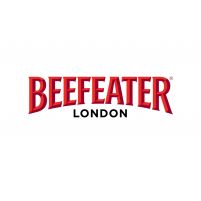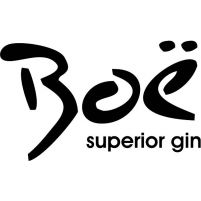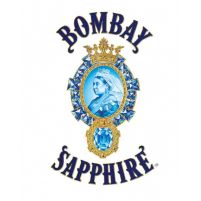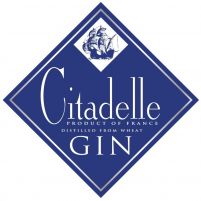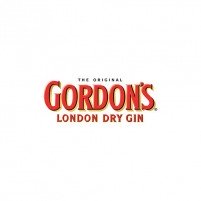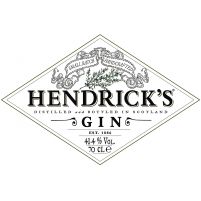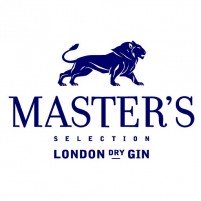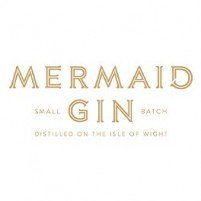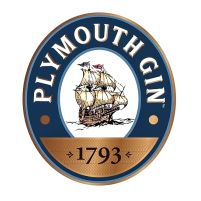0 products product (empty)
White Gin
- SALE
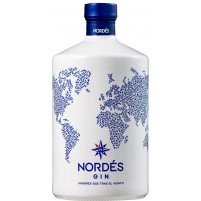
Nordes 70cl
Gin(36)26,40 € 20,25 €16,74 € + VAT (21%)Price size: 70clAlso in: 5cl (Miniature) 2,50€ | 1L 29,95€Alcohol Volume: 40%Liquor Style: PremiumCountry: SpainVariety: NeutralNordés Atlantic Galician Gin is a Premium Gin, defined by its producers as the only Galician Atlantic Gin. Where the world ends, the gin begins.
- SALE
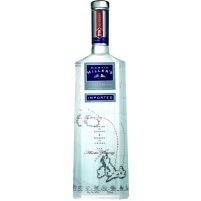
Martin Miller's 70cl
Gin(14)29,00 € 20,25 €16,74 € + VAT (21%)Price size: 70clAlso in: 5cl (Miniature) 2,30€ | 1.75L 75,95€Alcohol Volume: 40%Liquor Style: London DryCountry: United KingdomVariety: NeutralAvailable Cristal Miniature Bottle Martin Miller's Gin
Fruit of love, obsession and a touch of madness, Martin Miller's Gin is a premium gin made with 10 carefully selected botanicals that are mixed with pure Icelandic water, a nice touch of good taste. - SALE
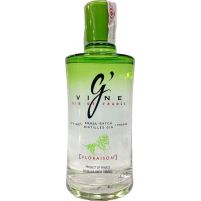
G'Vine Floraison 1L
Gin(9)39,90 € 25,45 €21,03 € + VAT (21%)Price size: 1LAlso in: 70cl 25,90€ | 5cl (Miniature) 3,90€Alcohol Volume: 40%Liquor Style: Ultra PremiumCountry: FranceVariety: NeutralVery soft, floral scent with juniper fully camouflaged, sometimes making us doubt whether we are drinking a gin.
- SALE
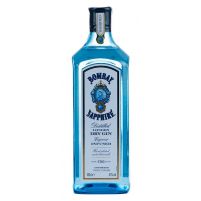
Bombay Sapphire 1L
Gin(11)28,99 € 20,45 €16,90 € + VAT (21%)Price size: 1LAlso in: 70cl 16,95€ | 5cl (Miniature) 2,12€ | 50cl 9,95€Alcohol Volume: 40%Liquor Style: London DryCountry: United KingdomVariety: NeutralSummer, imagination and balloon glasses splashing a London Dry Gin. The taste of Bombay Sapphire is reminiscent of ripe citrus when you first smell it. A hint of juniper makes it a spicy and light drink. Only for the discerning palate.
- SALE
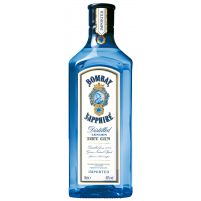
Bombay Sapphire 70cl
Gin(11)21,95 € 16,95 €14,01 € + VAT (21%)Price size: 70clAlso in: 1L 20,45€ | 5cl (Miniature) 2,12€ | 50cl 9,95€Alcohol Volume: 40%Liquor Style: London DryCountry: United KingdomVariety: NeutralSummer, imagination and balloon glasses splashing a London Dry Gin. The taste of Bombay Sapphire is reminiscent of ripe citrus when you first smell it. A hint of juniper makes it a spicy and light drink. Only for the discerning palate.
- SALE
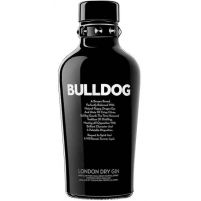
Bulldog 1L
Gin(9)31,00 € 16,35 €13,51 € + VAT (21%)Price size: 1LAlso in: 70cl 13,95€ | 1.75L 38,89€Alcohol Volume: 40%Liquor Style: London DryCountry: United KingdomVariety: NeutralBulldog Gin is defiantly delicious.
- SALE
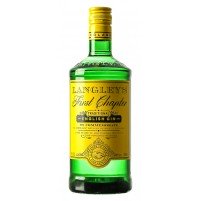
Langley's First Chapter 70cl
Gin11,90 € 6,15 €5,08 € + VAT (21%)Price size: 70clAlcohol Volume: 38%Liquor Style: NeutralCountry: SpainVariety: NeutralThere must always be a place for lovers of the classic and the traditional. And with a drink like gin, the classic style, as in its beginnings, is a winning bet.
- SALE

Bulldog 70cl
Gin(9)23,00 € 13,95 €11,53 € + VAT (21%)Price size: 70clAlso in: 1L 16,35€ | 1.75L 38,89€Alcohol Volume: 40%Liquor Style: London DryCountry: United KingdomVariety: NeutralBulldog Gin is defiantly delicious.
- SALE
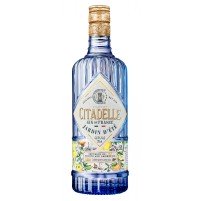
Citadelle Jardin d'Été 70cl
Gin26,95 € 16,95 €14,01 € + VAT (21%)Price size: 70clAlcohol Volume: 41.5%Liquor Style: FlavoredCountry: FranceVariety: NeutralA premium Gin crafted from 22 botanicals in France, imparting a unique freshness and aroma. As if that weren't enough, it is distilled in copper stills following the traditional French method.
- SALE
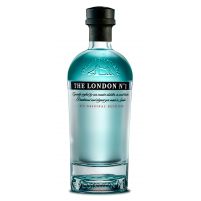
London N°1 Boxed Bottle 70cl
Gin(2)30,00 € 21,95 €18,14 € + VAT (21%)Price size: 70clAlcohol Volume: 47%Liquor Style: London DryCountry: United KingdomVariety: NeutralIt is distinguished by its turquoise color, elegant and fine aroma and soft spicy flavor, that are the result of its twelve botanicals and a triple distillation
- SALE
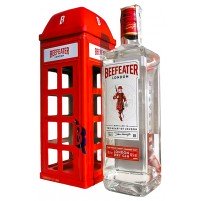
Beefeater 70cl
Gin(3)15,95 € 12,95 €10,70 € + VAT (21%)Price size: 70clAlso in: 5cl (Miniature) 1,95€ | 1L 16,95€ | 70cl with Gift 14,40€ | 50cl 10,30€Alcohol Volume: 40%Liquor Style: London DryCountry: United KingdomVariety: NeutralDisplay: Boxed BottleAvailable Plastic Miniature Bottle Gin Beefeater
Every body in the world thinks of Beefeater when they think of gin.
- SALE
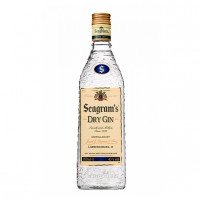
Seagram's Gin 70cl
Gin(4)17,60 € 14,95 €12,36 € + VAT (21%)Price size: 70clAlso in: 70cl with Gift 17,35€ | 1L 21,40€Alcohol Volume: 40%Liquor Style: London DryCountry: CanadaVariety: NeutralSeagram's Extra Dry Gin is one of the most deeply rooted gins in the world, due among other things to its excellent value for money. Try Seagram's Extra Dry Gin if you haven't tried it, it will be your premium Geneva of reference ever since.
- SALE
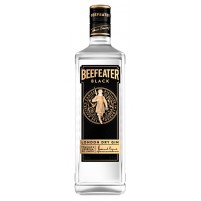
Beefeater Black 70cl
Gin18,95 € 12,95 €10,70 € + VAT (21%)Price size: 70clAlcohol Volume: 40%Liquor Style: London DryCountry: United KingdomVariety: NeutralBeefeater Black, the latest premium gem from the iconic brand, redefines the gin experience. With its nine original botanicals and the artisan addition of thyme and lemon verbena, this creation by master distiller Demond Payne offers a magical and special flavor profile.
- SALE
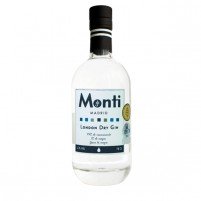
Monti 70cl
Gin(1)29,95 € 22,95 €18,97 € + VAT (21%)Price size: 70clAlcohol Volume: 41%Liquor Style: London DryCountry: SpainVariety: NeutralGin Monti is a great London Dry premium gin that, from the moment of its creation, has not ceased to receive national and international recognition in the form of awards. And not just any awards, but the two most important competitions in the world of gin: the San Francisco World Spirits Competition, where it won the gold medal in 2020, and the World Gin Awards in London, where it was recognised as the best gin in Spain in 2018 and 2019.
- SALE
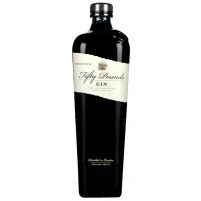
Fifty Pounds 70cl
Gin(1)23,00 € 13,55 €11,20 € + VAT (21%)Price size: 70clAlcohol Volume: 43.5%Liquor Style: London DryCountry: EnglandVariety: NeutralThe name comes from the time of the Gin Act of 1736, when a 50 pound tax was applied to those who produce and sell gin. Only two distilleries agreed to pay the tax!
- SALE
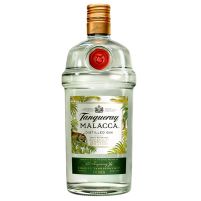
Tanqueray Malacca 1L
Gin(1)34,00 € 18,95 €15,66 € + VAT (21%)Price size: 1LAlcohol Volume: 41.3%Liquor Style: London DryCountry: EnglandVariety: NeutralTaste Tanqueray Malacca, your Premium Gin.
- SALE
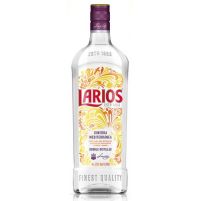
Larios Dry Gin 1.5L
Gin(3)18,95 € 15,95 €13,18 € + VAT (21%)Price size: 1.5LAlso in: 1L 11,55€ | 5cl (Miniature) 1,79€ | 70cl 8,95€Alcohol Volume: 37.5%Liquor Style: London DryCountry: SpainVariety: NeutralTaste Larios Dry Gin, your Premium Gin.
- SALE

Larios Dry Gin 1L
Gin(3)12,95 € 11,55 €9,55 € + VAT (21%)Price size: 1LAlso in: 5cl (Miniature) 1,79€ | 70cl 8,95€ | 1.5L 15,95€Alcohol Volume: 37.5%Liquor Style: London DryCountry: SpainVariety: NeutralTaste Larios Dry Gin, your Premium Gin.
- SALE

Nordes 1L
Gin(36)31,95 € 29,95 €24,75 € + VAT (21%)Price size: 1LAlso in: 70cl 20,25€ | 5cl (Miniature) 2,50€Alcohol Volume: 40%Liquor Style: PremiumCountry: SpainVariety: NeutralNordés Atlantic Galician Gin is a Premium Gin, defined by its producers as the only Galician Atlantic Gin. Where the world ends, the gin begins.
- SALE
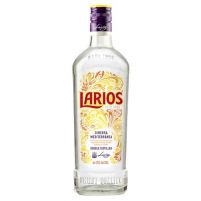
Larios Dry Gin 70cl
Gin(3)10,90 € 8,95 €7,40 € + VAT (21%)Price size: 70clAlso in: 1L 11,55€ | 5cl (Miniature) 1,79€ | 1.5L 15,95€Alcohol Volume: 37.5%Liquor Style: London DryCountry: SpainVariety: NeutralTaste Larios Dry Gin, your Premium Gin.
- SALE
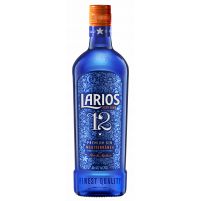
Larios 12 70cl
Gin(1)15,95 € 10,95 €9,05 € + VAT (21%)Price size: 70clAlso in: 5cl (Miniature) 1,99€Alcohol Volume: 40%Liquor Style: PremiumCountry: SpainVariety: NeutralAvailable Plastic Miniature Bottle Larios 12 Gin
Larios 12 arises from a combination of 12 species of exotic plants taken directly from nature, and five distillations.
- SALE
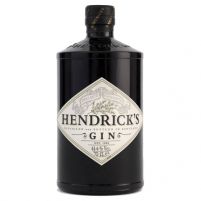
Hendrick's 70cl
Gin(5)36,00 € 25,95 €21,45 € + VAT (21%)Price size: 70clAlso in: 1L 34,95€ | 5cl (Miniature) 2,92€Alcohol Volume: 44%Liquor Style: PremiumCountry: ScotlandVariety: NeutralA super premium gin with a subtly different recipe of botanicals, including a unique infusion of rose petals and cucumber which, when combined, results in a refreshing drink with a delicious floral aroma.
- SALE
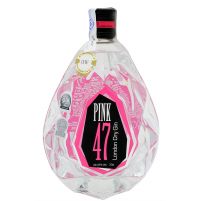
Pink 47 70cl
Gin(5)19,20 € 12,95 €10,70 € + VAT (21%)Price size: 70clAlcohol Volume: 47%Liquor Style: London DryCountry: EnglandVariety: NeutralPink 47, also known as the Pink Diamond, is a sophisticated Premium Gin that comes in an elegant presentation inspired by the precious pink diamond, Khavaraya. With an elegant and subtle taste, it is ideal both to prepare a good Gin Tonic and as a base to prepare exquisite cocktails. Try it now!
- SALE
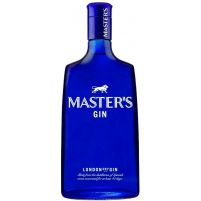
Master's Selection Gin 70cl
Gin(3)15,30 € 9,95 €8,22 € + VAT (21%)Price size: 70clAlcohol Volume: 40%Liquor Style: London DryCountry: SpainVariety: NeutralTaste Master's Selection Gin, your Premium London Dry Gin.
WHAT IS WHITE GIN?
When we talk about gin, the famous gin and tonic always comes to mind when it comes to drinking it. And if it is true that gin is one of the most consumed drinks in the world, moreover, it gives us the opportunity to combine it in different ways, there are even different types and among them is white gin. What is it really?
Gin is a distilled drink flavoured with nebrin and juniper berry, which is the base of any gin, with an alcohol content ranging from 37º to 47º. It is made using ethyl alcohol of agricultural origin, usually from cereals or beetroot. This alcohol is flavoured by distillation in copper or stainless steel stills.
This traditional process is what gives rise to white gin, which can later be derived from various types, but what really stands out is its lack of colour.
HISTORY OF GIN
The origin of this drink comes from 17th century Holland. An apothecary named Leiden, who mixed the gin that was consumed at the time, being of low quality, with juniper berries to soften it. The name gin comes from the Dutch word "jenever" meaning juniper.
From its earliest origins in the Middle Ages, the drink has evolved from an herbal medicine to an object of commerce in the spirit industry. It became popular in Britain (particularly in London) when William of Orange became King William III of England.
The success of this drink soon spread to different parts of Europe and when it reached England, the Dutch word contracted, giving way to the word gin, which we all know and use.
THE PRODUCTION PROCESS
There are different types of white gin, each one is made in a different way, but the base follows the traditional process mentioned above. What changes is whether they have different flavourings and related elements, although they still produce an explosion of flavours on the palate.
White gin is made from grain alcohol and a process called fractional purification. The purified alcohol is mixed with juniper berries and other flavouring agents such as cumin, fennel, cardamom, anise, almonds, orange peel or coriander seeds and distilled and diluted to a certain strength.
Nebrins dominate the flavouring of gin, but other ingredients are used to obtain different aromatic profiles that will characterise the final product. The biggest secret that different gin manufacturers can keep is the proportion and combination of herbs they use in their production to flavour and give a pleasant taste to the liquor.
TYPES OF WHITE GIN
The first classification we can find is according to the process of elaboration between Dutch and British gin.
Dutch Gin
Called "Genever" or "Jenever", soft alcohols are distilled together with treated and fermented malt, where the obtained production is then mixed with different elements with aromatic and flavour characteristics. Finally, it is distilled again, resulting in a gin with an alcohol content of about 44 proof. There are several families of genevers
- Young: with no or almost no cask ageing.
- Old: which have a certain level of ageing.
- Fruity: such as citroneen genever, young genevers flavoured with lemon.
British Gin
The main difference is the use of a strong alcohol reduced afterwards, as the rest of the process is the same, it is also flavoured and re-distilled. This gin is drier and reaches 47 proof.
A second classification varies by the amount of flavourings, type of juniper in its production, sweeteners and ageing in the distillation. They are:
Juniper-flavoured spirit drinks
These are actually more of a juniper-flavoured spirit. They are considered under the classification of gin. This type of gin results from a process in which the drink is flavoured with berries of the common juniper or red juniper (as distinct from other gin denominations). To be recognised as such, it must be made with alcohol of agricultural origin, spirit or a grain distillate.
London Dry Gin
This gin is the best-selling and best-known gin in the world. It is characterised by being dry and by the absence of colourings, sweeteners and other additives in its content, which in this case are those that the other types of gin would have. Its aromatisation is carried out in traditional stills, in which it is possible to obtain a distillation of around 70 degrees of alcohol, which is then reduced with water. It is distilled after flavouring.
Gin
This gin must be made with only common juniper berries and ethyl alcohol of agricultural origin. It must be predominantly flavoured with juniper berries, although it is usually flavoured with other flavours during redistillation to make it smoother to the taste.
Distilled Gin
This type of gin is characterised by the fact that in its manufacturing process the alcohol of agricultural origin must first be flavoured and then distilled. It may contain extra flavourings that can be added after distillation with the flavourings. This distillation must also have a minimum of 96% alcohol in its composition.
Old Tom Gin
This classic style of gin is characterised by being made the old-fashioned way. Therefore, it is sweetened and seeks more vegetal notes in the flavouring of gin like this.
Sloe Gin
Sloe means sloe in English. These slightly acidic and bitter fruits are what give pacharán its characteristic flavour. Sloe gins are made from an Old Tom gin and sweetened and flavoured with sloes by maceration.
After this maceration, the sloes are removed and it is bottled after filtering, with an alcohol content of approximately 25-30 proof. A couple of examples are Plymouth Sloe Gin or Hayman's Sloe Gin.
Aged gins
Classic gins are not aged at all. But in recent years, traditionally made gins have appeared that include a brief barrel ageing process, the aim being to develop new aromatic nuances.
The first aged gin to appear was Citadelle Reserve 2008. A year later, Beefeater Burrough's Reserve, a gin aged in oak casks, was launched.
COMPOSITION OF WHITE GIN
White gin is a distillate made with neutral alcohol of high alcohol content, flavoured with juniper berries and other aromatic ingredients of vegetable origin: citrus, spices, roots, flowers, herbs or fruits.
The vast majority of gins on the market obtain their base alcohol from grain or beetroot, although in reality any source of sugar or fermentable sugars could produce it.
There are several different types of white gin:
- London Dry
- Jenever
- Old Tom
- Aged
- Premium
- Ultrapremium
TASTE OF WHITE GIN
The flavour of white gin will always highlight the juniper berries, but it will depend on the type of white gin you are drinking. Some are more flavoured with citrus, fruits, flowers and spices. The base will be very similar in the mouth, but the final flavour will vary depending on how it is made.
COCKTAILS MADE WITH WHITE GIN
Among the wide variety of cocktails and mixed drinks made with white gin that we can find, the ones we highlight are:
- Gin tonic
- Pink Lady
- Negroni
- Tom Collins









